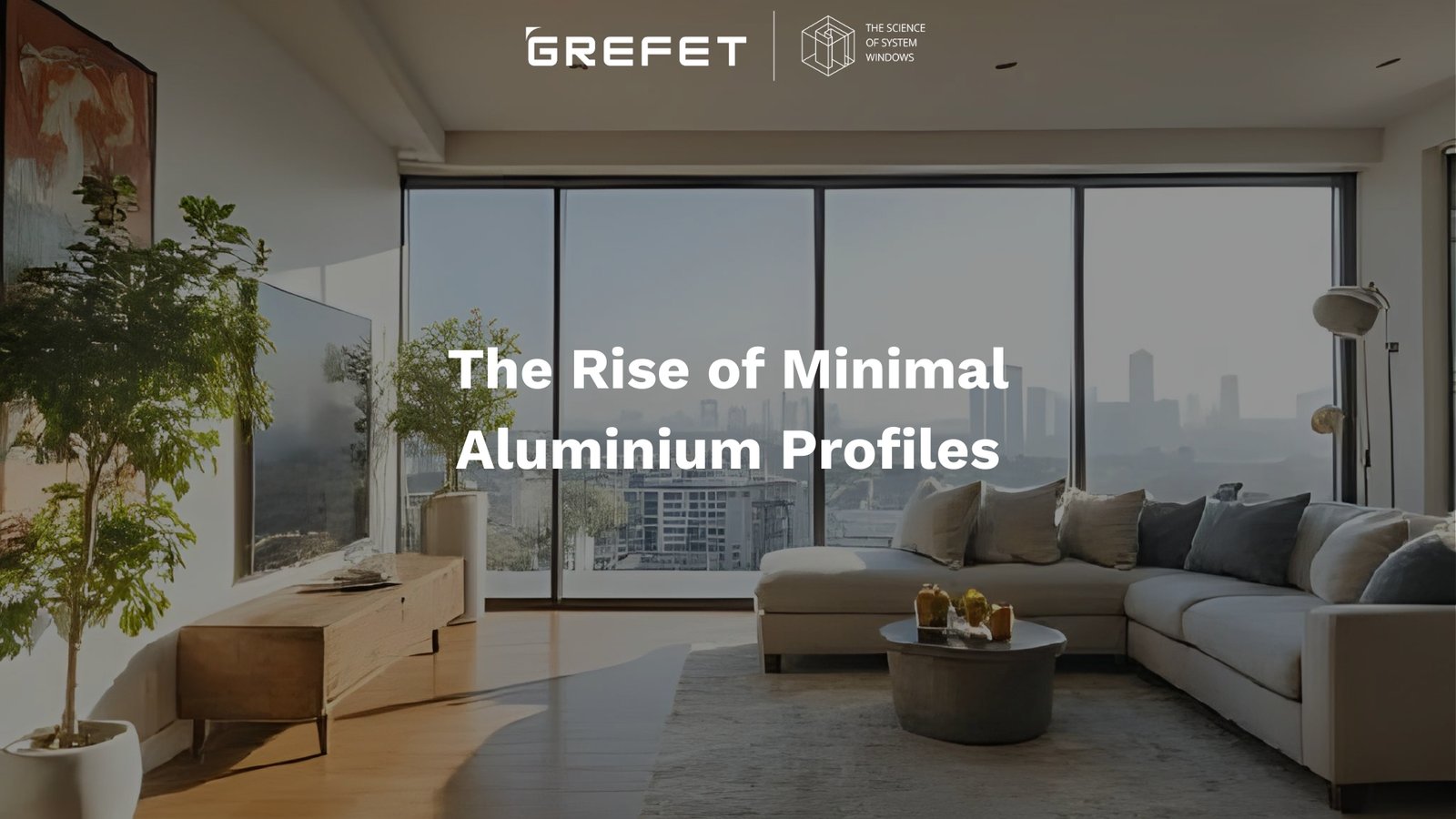The demand for clean lines, wide glass spans, and uninterrupted views has transformed modern building design. At the center of this evolution is the rise of minimal aluminium profiles. Architects and homeowners are seeking systems that maximize light, reduce visual clutter, and deliver both style and performance. For GREFET, this movement is not just a design preference, it’s a defining shift in how aluminium systems are engineered.
Why Minimal Aluminium Profiles Are Gaining Popularity
The appeal of minimal aluminium profiles lies in their ability to merge aesthetics with function. Slim frames allow more glass, which means more daylight, broader views, and a seamless connection between indoor and outdoor spaces.
- More Glass, Less Frame – Enhances transparency and makes spaces look larger.
- Contemporary Appeal – Fits perfectly into luxury apartments, offices, and modern villas.
- Universal Design – Works with sliding doors, windows, and fixed glazing alike.
Minimal aluminium profiles are no longer a niche request; they are quickly becoming the default choice in premium projects.
The Rise of Minimal Aluminium Profiles and Structural Performance
While the frames are slim, the engineering behind them is anything but minimal. High-grade aluminium alloys allow profiles to remain structurally strong while supporting large and heavy glass panels.
- High Wind Load Resistance – Crucial for high-rise towers in urban centers.
- Strength-to-Weight Ratio – Enables thin profiles without compromising durability.
- Advanced Sealing – Maintains airtightness and water resistance even with sleek designs.
This ensures that the rise of minimal aluminium profiles is not only about beauty but also about uncompromised performance.
Energy Efficiency and Sustainability in Minimal Aluminium Profiles
Modern minimal aluminium systems incorporate thermal insulation, insulated glazing, and precision engineering to improve energy performance.
- Better Insulation – Reduces heating and cooling loads.
- Daylight Optimization – Slim frames allow natural light, reducing dependence on artificial lighting.
- Recyclable Material – Aluminium is 100% recyclable, making minimal profiles eco-friendly.
By combining aesthetics with energy efficiency, these profiles are helping buildings meet stricter sustainability goals.
The Rise of Minimal Aluminium Profiles in Urban Living
Minimal aluminium profiles aren’t just about buildings; they shape the way people live. In crowded urban environments, natural light and views are priceless. Wide-span sliding systems and floor-to-ceiling windows create homes that feel larger, brighter, and more open.
For architects, this trend is a powerful design tool. For residents, it’s an upgrade in quality of life.
Key Applications of Minimal Aluminium Profiles
- Luxury Apartments – Sleek finishes and unobstructed city views.
- Commercial Spaces – Glass-heavy offices that promote openness and collaboration.
- Villas & Resorts – Indoor-outdoor connections with sliding glass doors.
- High-Rise Towers – Maximum light penetration without bulky framing.
What Urban Designers and Builders Should Prioritize
If you are considering minimal aluminium systems for your projects, here’s what to keep in mind:
- Choose system-based solutions, not cut-to-fit profiles.
- Ensure tested performance for wind, water, and thermal resistance.
- Match profiles with high-performance glazing for maximum efficiency.
- Work with a supplier who offers after-sales support and serviceability.
The Future Belongs to Minimal Aluminium Profiles
The rise of minimal aluminium profiles marks a decisive step forward in modern architecture. These systems bring together elegance, strength, and sustainability, qualities that today’s buildings demand.
At GREFET, we believe minimal doesn’t mean less. It means more light, more beauty, and more resilience in every frame. For architects and designers, embracing this trend means shaping spaces that are timeless, functional, and future-ready.


